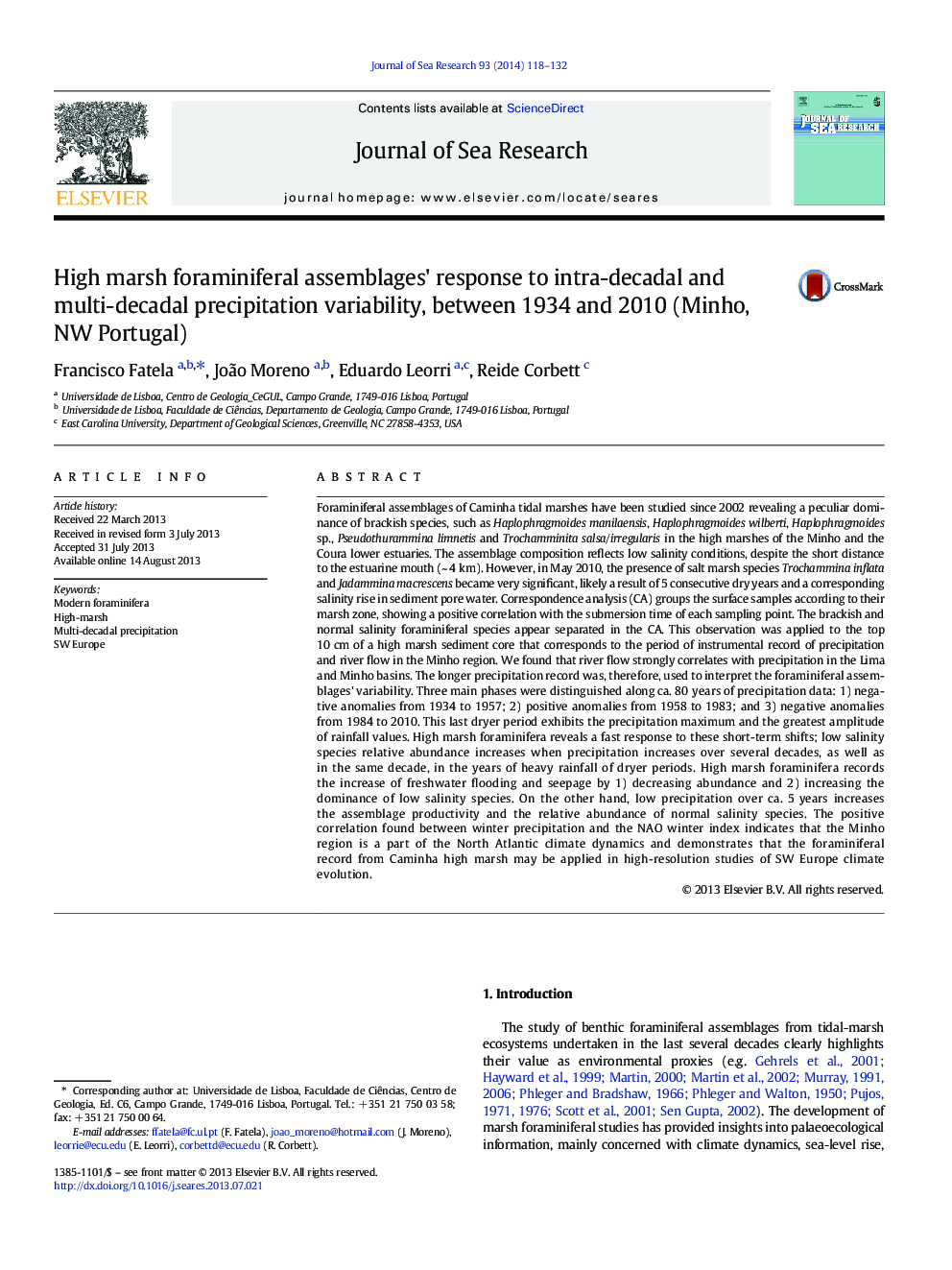| کد مقاله | کد نشریه | سال انتشار | مقاله انگلیسی | نسخه تمام متن |
|---|---|---|---|---|
| 4549714 | 1627481 | 2014 | 15 صفحه PDF | دانلود رایگان |

• Marsh foraminifera from NW Portugal were studied over the last ca. 80 years.
• The pattern distribution across the marsh shows a correlation with submersion time.
• High marsh Foraminifera have a prompt answer to precipitation short-term variations.
• The load of brackish/normal salinity species are related with rain anomalies.
• Marsh Foraminifera reveal a main role in the studies of SW Europe climate evolution.
Foraminiferal assemblages of Caminha tidal marshes have been studied since 2002 revealing a peculiar dominance of brackish species, such as Haplophragmoides manilaensis, Haplophragmoides wilberti, Haplophragmoides sp., Pseudothurammina limnetis and Trochamminita salsa/irregularis in the high marshes of the Minho and the Coura lower estuaries. The assemblage composition reflects low salinity conditions, despite the short distance to the estuarine mouth (~ 4 km). However, in May 2010, the presence of salt marsh species Trochammina inflata and Jadammina macrescens became very significant, likely a result of 5 consecutive dry years and a corresponding salinity rise in sediment pore water. Correspondence analysis (CA) groups the surface samples according to their marsh zone, showing a positive correlation with the submersion time of each sampling point. The brackish and normal salinity foraminiferal species appear separated in the CA. This observation was applied to the top 10 cm of a high marsh sediment core that corresponds to the period of instrumental record of precipitation and river flow in the Minho region. We found that river flow strongly correlates with precipitation in the Lima and Minho basins. The longer precipitation record was, therefore, used to interpret the foraminiferal assemblages' variability. Three main phases were distinguished along ca. 80 years of precipitation data: 1) negative anomalies from 1934 to 1957; 2) positive anomalies from 1958 to 1983; and 3) negative anomalies from 1984 to 2010. This last dryer period exhibits the precipitation maximum and the greatest amplitude of rainfall values. High marsh foraminifera reveals a fast response to these short-term shifts; low salinity species relative abundance increases when precipitation increases over several decades, as well as in the same decade, in the years of heavy rainfall of dryer periods. High marsh foraminifera records the increase of freshwater flooding and seepage by 1) decreasing abundance and 2) increasing the dominance of low salinity species. On the other hand, low precipitation over ca. 5 years increases the assemblage productivity and the relative abundance of normal salinity species. The positive correlation found between winter precipitation and the NAO winter index indicates that the Minho region is a part of the North Atlantic climate dynamics and demonstrates that the foraminiferal record from Caminha high marsh may be applied in high-resolution studies of SW Europe climate evolution.
Journal: Journal of Sea Research - Volume 93, October 2014, Pages 118–132